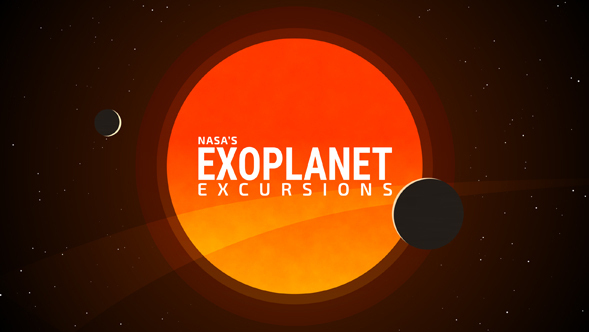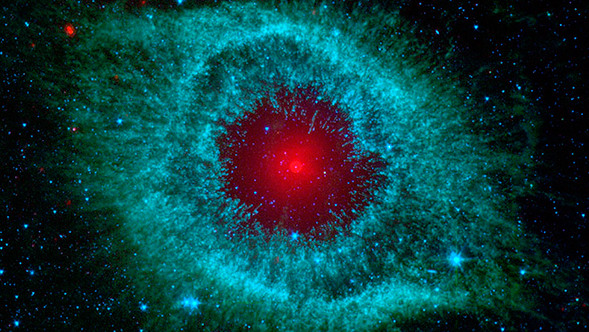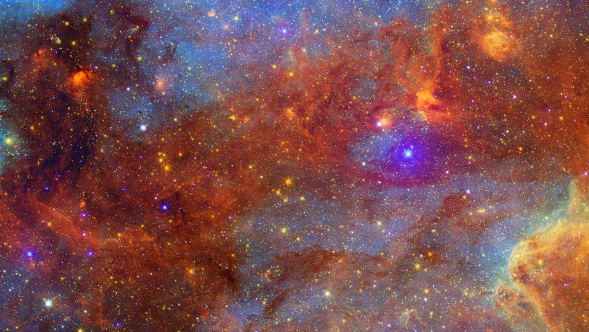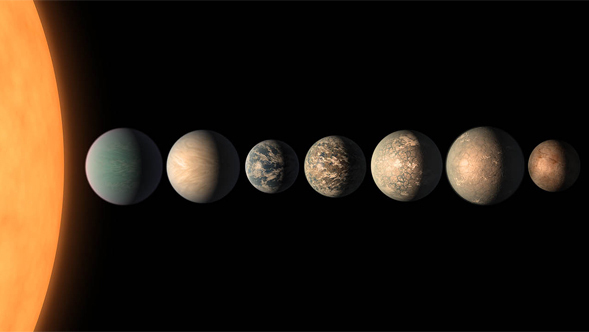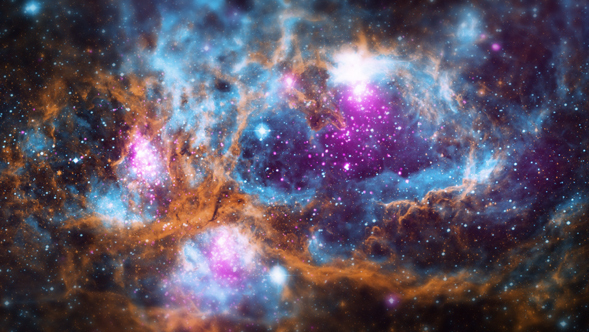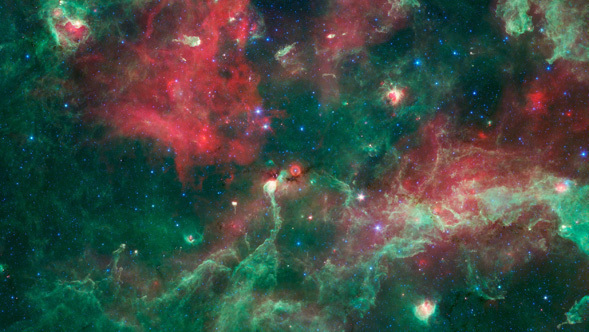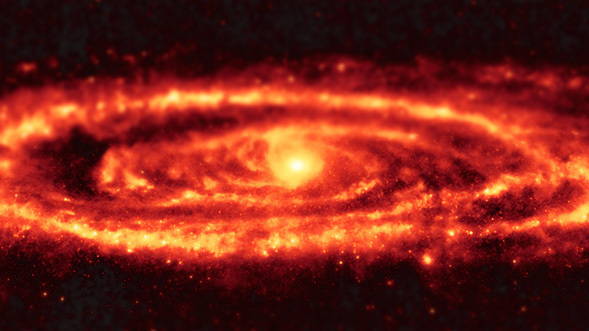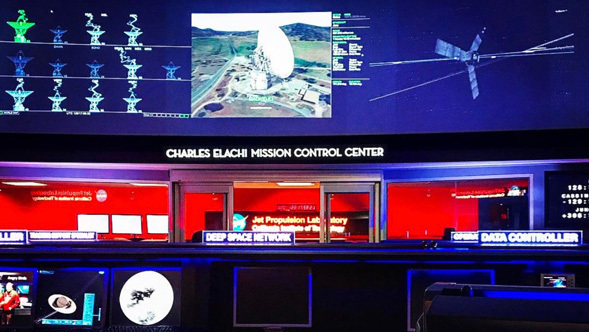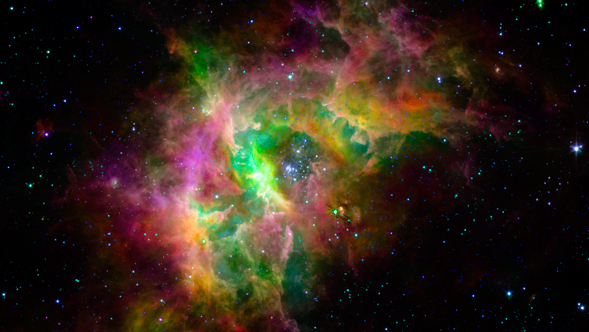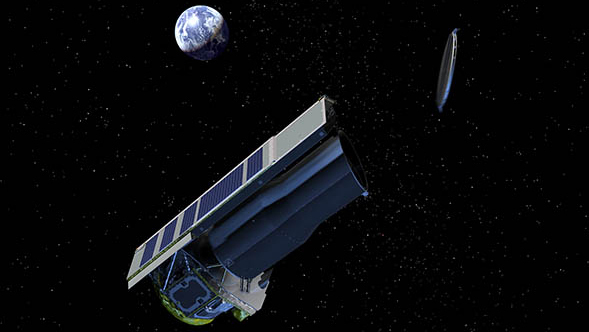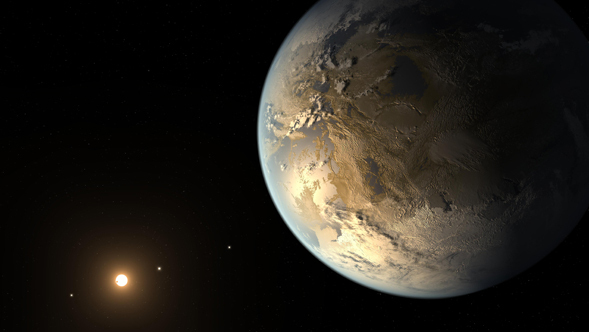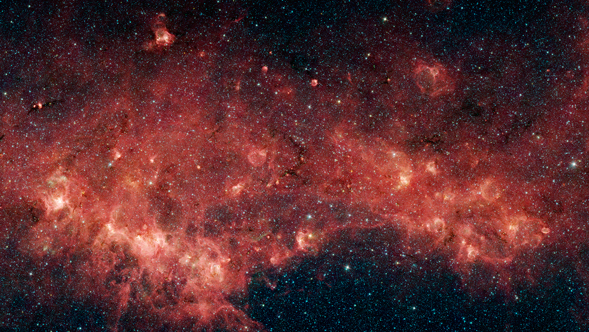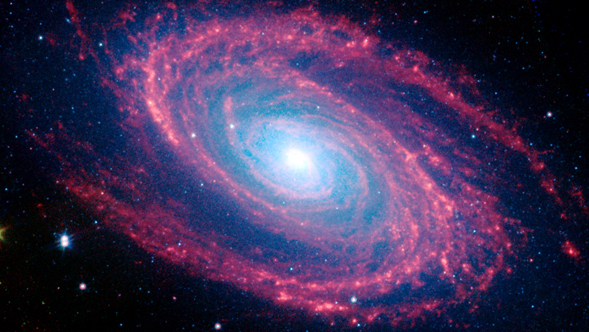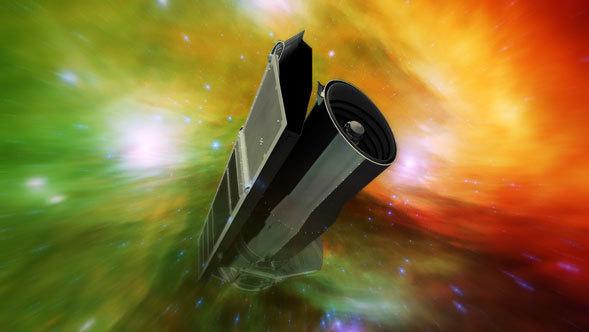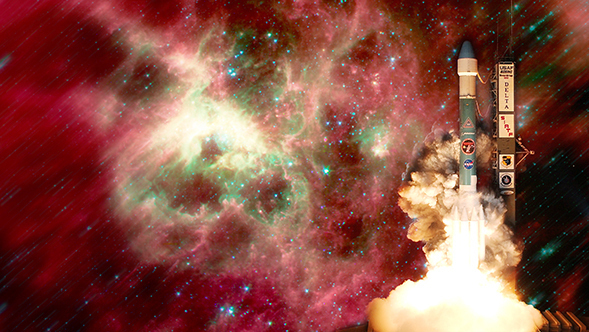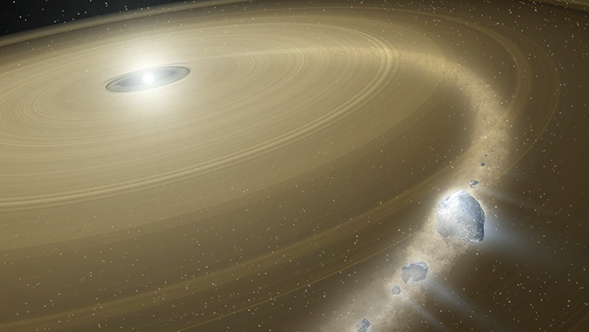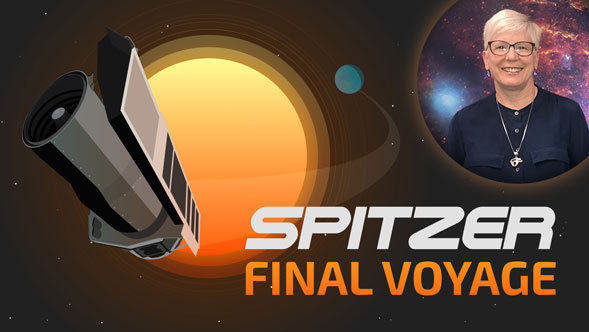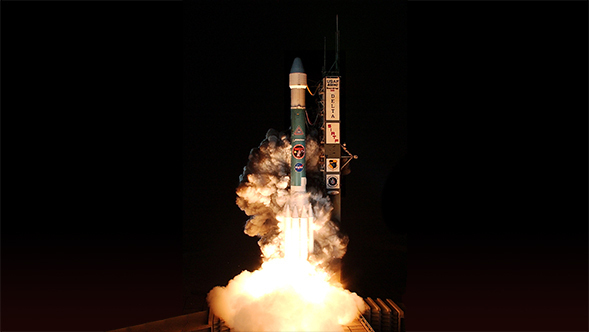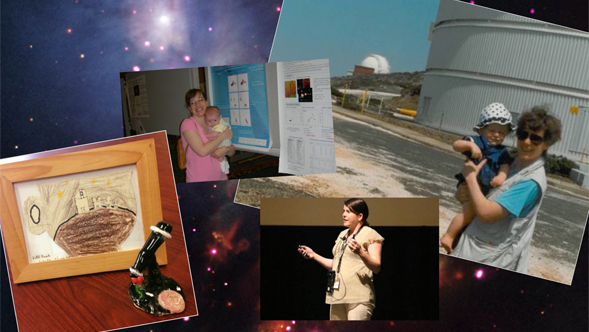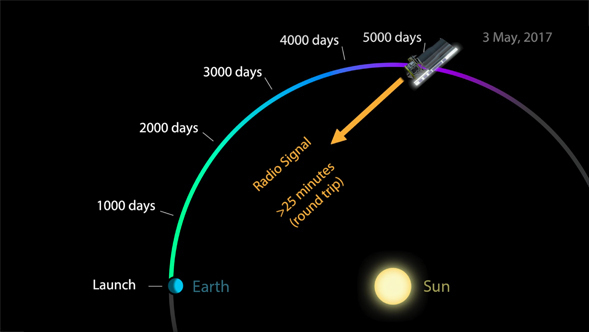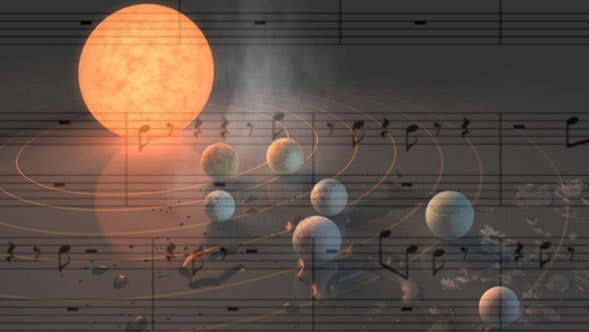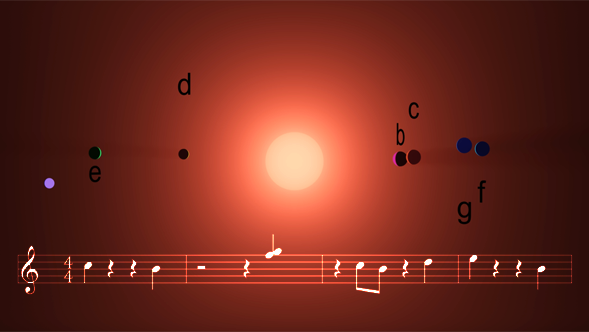By Robert Hurt | March 30th, 2021
Have you ever wondered what it would be like to actually fly through a system of exoplanets orbiting a distant star, or float next to a space telescope as it studies the universe?
About six years ago, I was fortunate to have been given a chance to join the Spitzer Operations team. I had two jobs on Spitzer: sequencing and flight control.
I joined Spitzer Science Center (SSC) in 1997 after working in NED as a software developer for eight years, though it was still called SIRTF Science Center at the time. During the 12 years at SSC, my jobs changed and increased in responsibilities, from application developer to cognizant engineer for science user tools development, to SSC uplink and archive lead.
When we meet one of our colleagues for the first time, it usually doesn’t take very long to figure out that we have friends or co-workers or projects in common. For the five of us, all professors in the Department of Physics & Astronomy at Western University in London, Canada, the Spitzer Space Telescope is our common link.
I joined the Spitzer Flight Control Team four years ago. I worked as the ACE, which is the person who sends commands to the Spitzer observatory and monitors the data coming down from the spacecraft.
The start of my life and career voyage via Spitzer began in 2014. After a two-year unpaid internship at JPL doing graph theory for satellite communication, I was hired by the Multi-Mission Resource Scheduling Services (MRSS) team as a Mission Operation Engineer.
In July of 1997, as Manager of the Science Data Processing Systems Section at JPL, I was having the time of my life managing the processing of the first images and data from the Mars Pathfinder mission while meeting the challenges of all the other JPL projects we were supporting.
I leapt from "Superfriend" to Ph.D., then learned Science Operations in Spain, on ISO. 'Til George and SIRTF lured me back to apply the knowledge I had gained ...
The best way for me to express my time at Spitzer can be wrapped up in one word: family. Spitzer was the first project I ever worked for. From the first day, there was an ease of meeting the team members and witnessing their diligence in supporting their spacecraft. The care they had for each other was immediately apparent.
About 16 years ago I was ecstatic to hear I got the job as a science communicator at NASA's Jet Propulsion Laboratory, with the specific task of covering the upcoming launch of the Spitzer Space Telescope. My background was not in space, but biochemistry.
Spitzer was my job for seven years, and has been an important part of my research for much longer. I even met my wife through Spitzer, though that is another story.
I am thinking of the Spitzer Space Telescope, and about the job I got as Helpdesk Operator in 2005. That job was meant for me. I know because I found out about the website on which it was posted the same day it was posted after reaching out to an old research advisor, even though I had left the field of astronomy a billion years ago.
Thinking back on it now, so close to the end of Spitzer's mission, it would be pretty hard to understate the impact it's had on my life. Spitzer influenced me as a graduate student, as a member of the Spitzer team, and as a scientist.
This year we celebrate the 15-year legacy of NASA’s Spitzer Space Telescope. I was happy to be asked to write about the role of Spitzer in my career. Indeed, I am one of the many scientists whose career has been shaped by Spitzer and the fantastic data it provided us with during its long lifespan.
My Spitzer story starts in 1999 when I was working on my PhD at the Space Telescope Science Institute in Baltimore. I received a letter from the Infrared Spectrograph (IRS) team at Cornell University encouraging me to apply for one of their position openings. They had seen my vitae at one of the AAS meetings earlier the same year.
I have no direct proof that Spitzer exists. I joined Spitzer relatively late, in 2007, four years after launch. I have never seen the spacecraft in a clean room, I did not know what my future held when one August day a rocket sent Spitzer into the sky between my junior and senior years of college, so I paid no attention to what seemed to be just another launch.
We often think about Spitzer as being a 16-year-old. That is the time it has been operating after its launch on a Delta II Heavy rocket from Cape Canaveral. But, it is much older than that...
As Spitzer is on its "Final Voyage", training its infrared eye on the sky for the final nine months of its mission, I am a bit sad, but at the same time proud and upbeat that I have been connected to this mission for most of my career in astronomy. And besides my career, Spitzer also played a role in my personal life... So, one could say that, for the last two decades, Spitzer has been meshed into the fabric of my life.
As a graduate student at the turn of the millennium, I will never forget a particular moment that caused my whole being to yell 'Stop the press!'. It changed the course of my career and led to a long-term love affair with NASA’s Spitzer Space Telescope.
On January 30, 2020, NASA’s Spitzer Space Telescope will transmit the final science and engineering data to mission control and then be commanded off, ending its amazing and surprising mission. But even after Spitzer ceases transmissions, scientists will continue making discoveries from its 16 years of data for decades to come.
In less than one month, NASA’s Spitzer Space telescope will be exactly half my age and given how much time went into its planning, preparation and construction, we could probably be twins. But while I've spent all of my 30 years on Earth, Spitzer has spent 15 of those orbiting our Sun in space, looking out into the depths of the Universe.
August 25 marks 14 years since NASA's Spitzer Space Telescope was launched into space from Cape Canaveral in Florida. Send us your questions with a hashtag #AskSpitzer on Twitter or Facebook between July 17th and August 4th. Select questions will be answered by Spitzer experts in an upcoming anniversary video.
Mother’s Day is this Sunday, May 14th, and we are celebrating moms who are scientists on social media!
May 3rd, 2017 marked the 5,000th day of NASA's Spitzer Space Telescope mission. Happy 5000th day, Spitzer! We received a lot of messages of congratulations and celebration on social media. Check out #Spitzer5000!
We want your contribution. Take the transit notes and add your own music to them. Whether it’s classical, jazz, world, hip hop or dance. Share your creation with us on social media with #MyTrappist1.
I am one of the artists that develops education & public outreach multimedia for NASA's Spitzer Space Telescope. Whenever Spitzer data contributes to an exciting new discovery, we look for the best ways to explain it to the general public. Sometimes that means creating a public-friendly diagram from the data. Other times it might mean producing an artist concept that illustrates the discovery. Or a video explaining the scientific process behind it.































